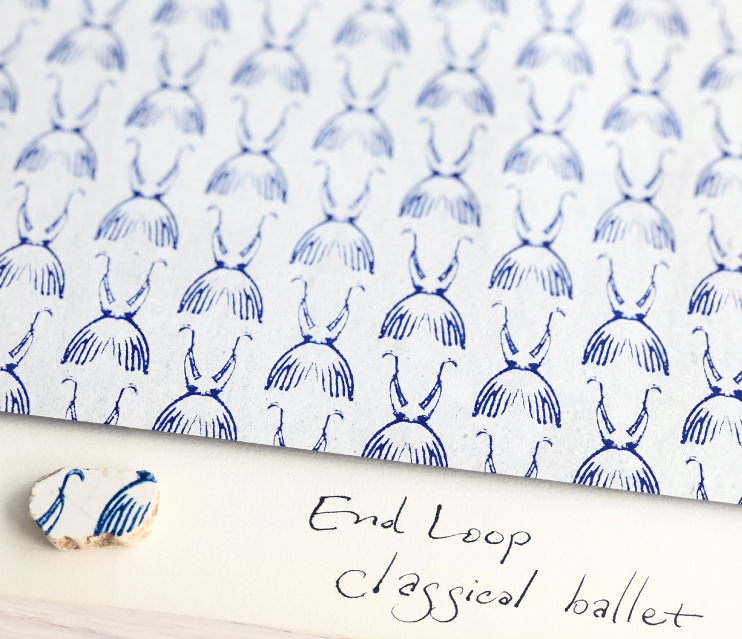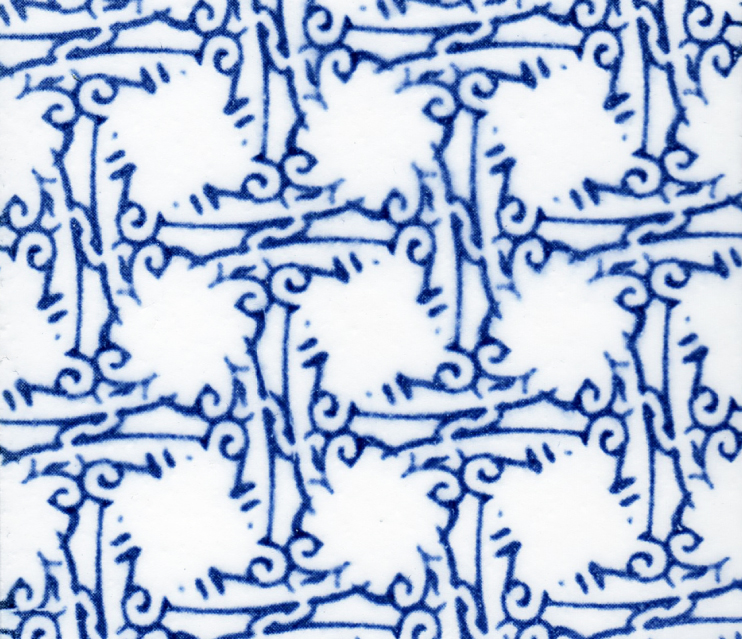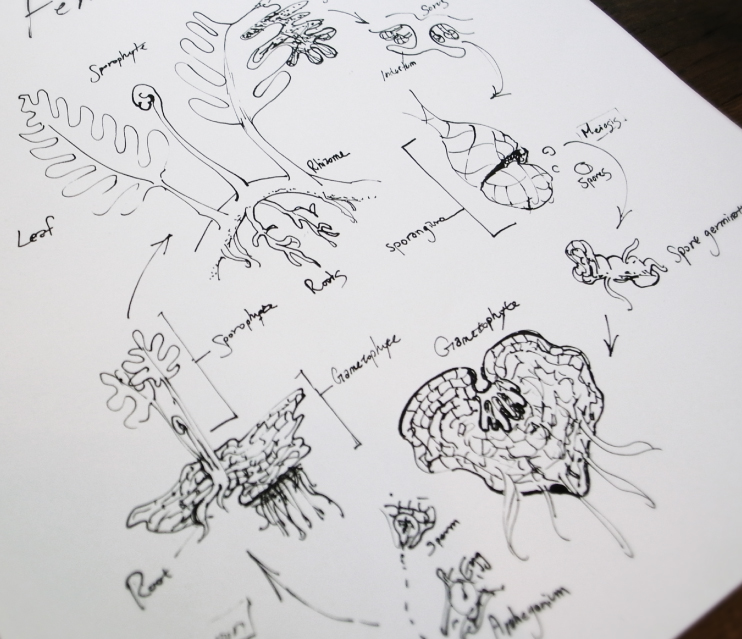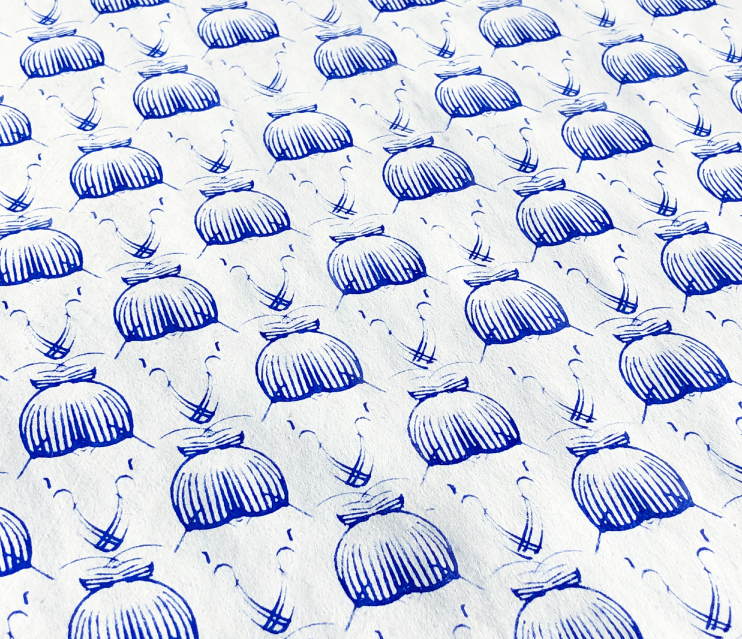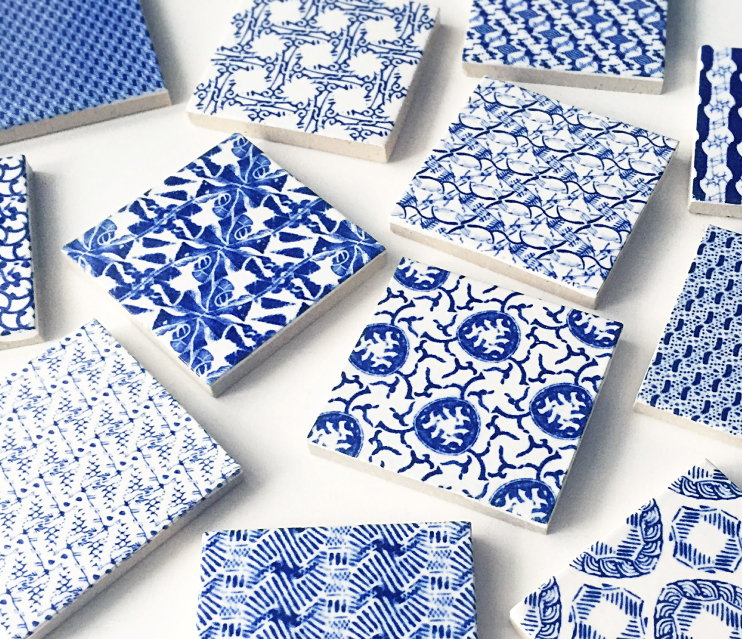guse ars
Art Unit

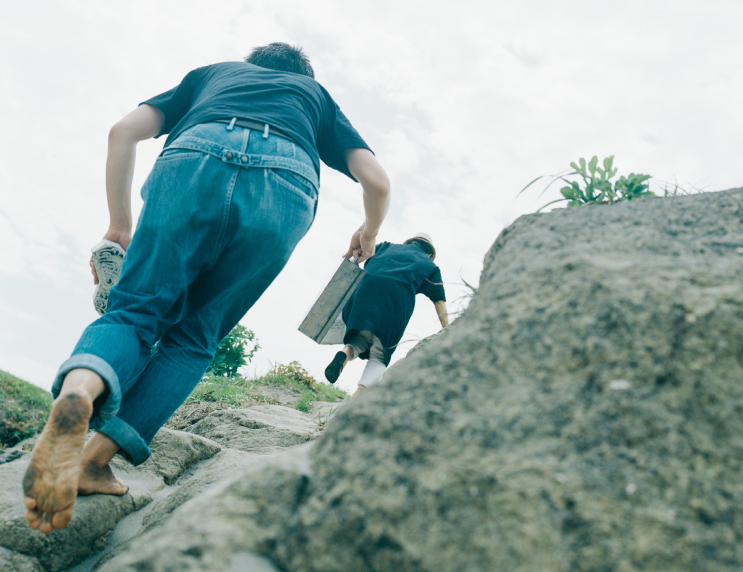
一片の陶片から広がる創造の海
時を漂流する『guse ars』のパターン
The patterns of “guse ars” travel beyond time
海岸線を歩きながら、ふと足もとに目を凝らしてみると、浜辺には本当に色々なものが落ちている。美しいうずを巻いた貝殻や、鈍い輝きを放つシーグラス、おもしろい形をしたサンゴや手触りの良い石。宝物を探すように、砂浜をえんえん歩いた記憶を、波音と一緒にどこかにしまってある人もきっと少なくないでしょう。
東京を拠点に活動する村橋貴博さんと岩瀬敬美さんによるアートプロジェクト『guse ars(グセ・アルス)』は、2010年にふたりが浜辺で見つけた陶器の破片との偶然の出会いによって誕生した。遥かな海を漂い、無数の波に洗われ漂着する小さな陶片をもとに、独創的なイマジネーションによって美しく拡張される彼らの作品は、観る者の眠っていた想像力と感受性を優しく揺さぶる。私たちはguse arsの発想の原点に触れるため、ふたりが陶片を拾うためによく訪れるという葉山の海岸へと向かった。
Walking on the beach, I found a variety of things indeed at my feet such as beautiful conches, sea glasses with dull light, funny shaped corals and smooth stones. Not a few people must have such memory somewhere in your heart, with the sound of waves, that you walked and walked on the beach like treasure hunting. An art project by Tokyo-based artists Takahiro Murahashi and Satomi Iwase, “guse ars”, began in 2010 from a serendipitous encounter with a pottery fragment on the beach. Based on small pottery fragments which have floated in the ocean and have been washed ashore by countless waves, their works are beautifully stretched by their unique imagination. Your latent power of imagination and sensitivity will be gently shaken. To feel the origin of inspiration, we headed for the beach in Hayama where they often visit to pick up pottery fragments.
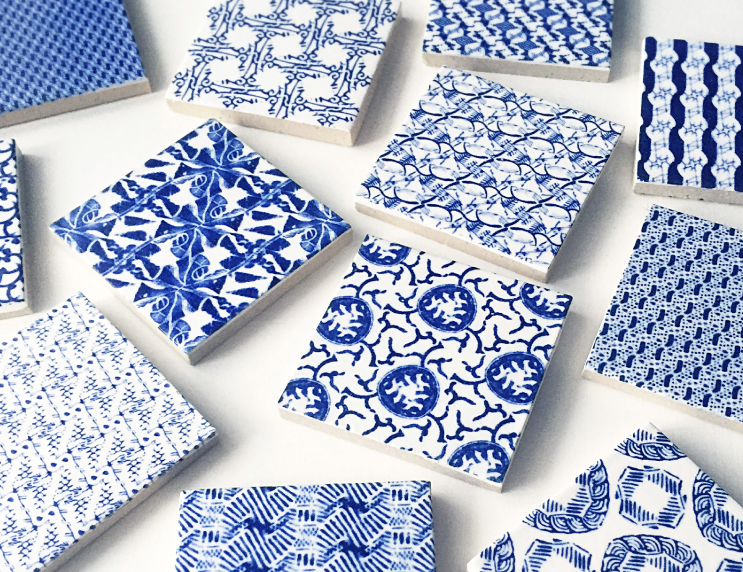


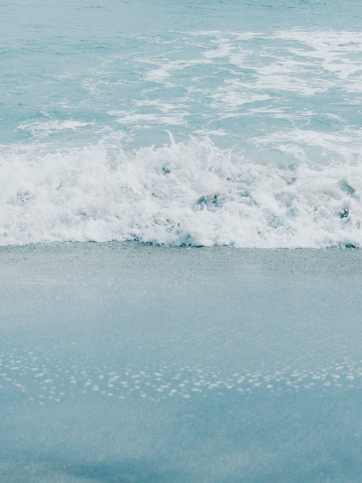

「偶然でしか、出会えない」。
陶片に魅せられ生まれたアートプロジェクト
Being charmed by pottery fragments, an art project has started
約束の日の朝、ゆるくカーブを描く海岸には昨夜から降り続いていた雨と強い風の影響で、ほとんど人気はなかった。
大浜海岸と一色海岸を両脇に見渡せる小磯の鼻と呼ばれる岬に立ち、はるか遠くに青空が広がる太平洋を眺めていると、海岸線を歩くふたりの姿が遠くに小さく見えた。きっと村橋貴博さんと岩瀬敬美さんに違いない。
ふたりの視線はやはり足もとにあり、時々かがみこんでは何かを拾っている。しばらくその様子を少し高台になった岬から眺めていると、私たちに気づいた村橋さんが笑顔で手を振ってくれた。満足そうな顔でやってきたふたりは白いネットいっぱいに拾った陶片をひとつひとつ大切そうに見せてくれた。ふたりの集めた陶片を比べてみると、それぞれに好みの色や形、模様の残り方があることがわかる。
「ひとくちに陶片といっても様々なものがあるんです」。陶器の割れ方によってできる形状や、大きさ、厚み、釉薬の残り方、触った質感、そして何よりも模様の残り方が大切なのだとふたりは言う。「もともと何の絵柄だったのか、わからないくらいが面白い。例えば虎の絵が描かれていたとして、虎がそのまま残っているよりも、その一部分がわずかに残って抽象的な見え方になったものに特に興味を惹かれます」。
That morning, there were few people on the winding beach because of the rain and strong wind since the previous night. I was standing on Koiso no Hana Cape, from which you can look out over both Ohama beach and Isshiki beach, and gazing at the Pacific Ocean and blue sky far away when I found two small figures walking on the beach. They must be Takahiro Murahashi and Satomi Iwase. As expected, both of them were looking at the ground, sometimes leaning over to pick up something. When I was watching the scene for a while from the cape, Murahashi noticed me and waved his hand with a smile. Looking satisfied, they showed us the pottery fragments they had gathered, filled in a white net, one by one with care. By comparing what each of them gathered, I found that his tastes for color, shape, and how the design remains are different from those of hers. “Each fragment is different,” they say that what they care most is how the design remains, let alone the shape, size, thickness, how glaze remains, and how you feel when you touch it. “I find it more interesting if the design remains too little to guess its original one. For example, if a tiger was originally painted, what attracts me more are the remains of one part of the tiger which are now abstract.”
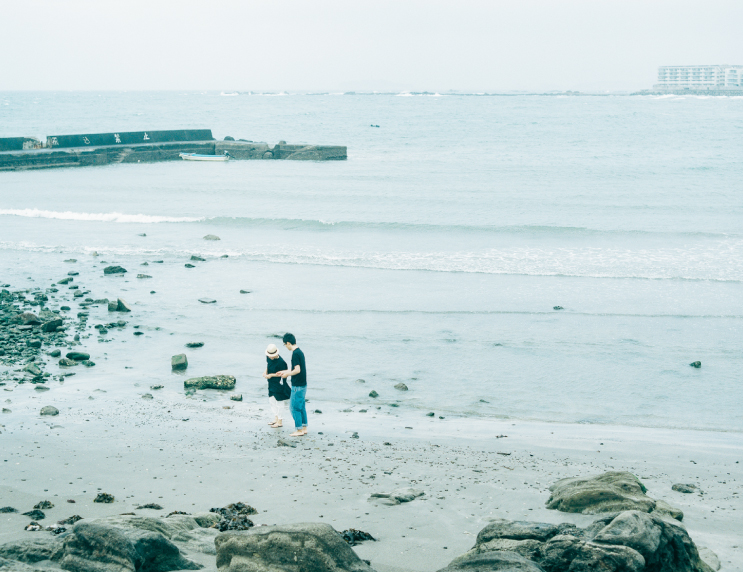



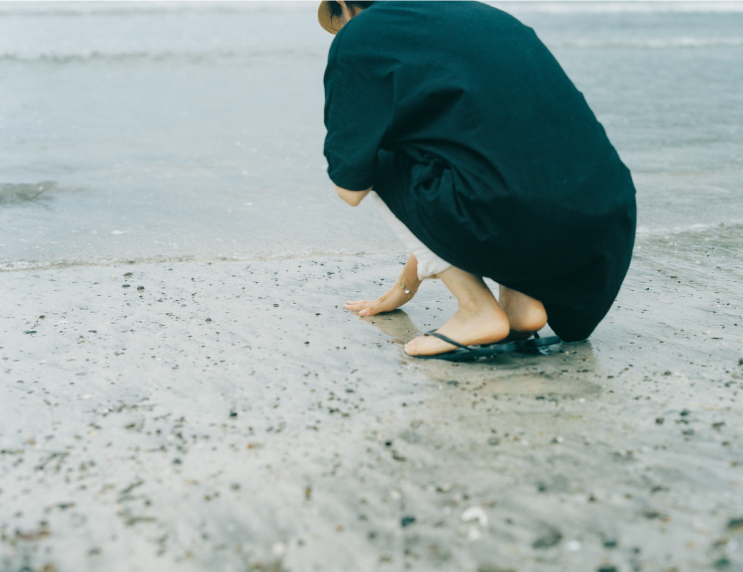

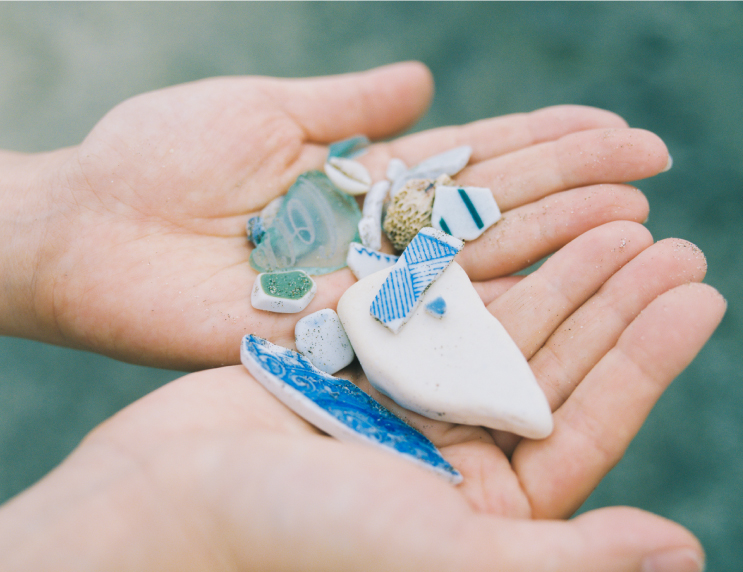
ふたりが初めて陶片を見つけた時、それがguse ars結成の時だった。8年前にも遡る当時のエピソードを聞いていると、彼らが陶片を見つけたのではなく、もしかしたら、陶片が彼らを見つけたのではないか、そう感じた。「たまたま鎌倉の海に遊びに行った時、友人と何の気なしに貝殻や石やガラスを拾いながら海岸を歩いて、陶片をいくつか拾ったんです。その中にすごく惹かれる陶片があって(岩瀬)」。「それが、何だかわかる絵の一部分だったら、そこまで興味を抱かなかったかもしれないけれど、抽象的な形で模様の一部が残っていたんです。今思えば、その陶片がとても想像力を掻き立てられるものだったから良かったんだと思います。この陶片に残された要素で何か面白い表現ができるんじゃないか。割とすぐに作品づくりへの意識へと直結したんです(村橋)」。その夜は眠れなかった。そう振り返るふたりは、この陶片を使って自分たちに何ができるか、その可能性に胸を膨らませ、いつまでも語り合ったという。“とにかく作りたいという衝動、アイデアがとめどなく溢れ出した”ー。表現者にとってこれほど幸せなことがあるだろうか。その時偶然見つけた陶片を、もし拾ってなかったら?と聞いてみた。ふたりは口を揃えて「今の活動はしていなかったと思う」と答えた。
The moment they found a pottery fragment for the first time was the time when “guse ars” was formed. Listening to their story about what happened eight years ago, I even felt that it might have not been them who found the pottery fragments, but rather the pottery fragments themselves might have found the two of them. “When we happened to visit Kamakura, we took a walk on the beach with our friends, picking up some shells, stones or glasses, without any intention. And I picked some pottery fragments. Then, there was a piece that attracted us a lot (Iwase).” “If we could imagine what the original design was from the fragment, we may not have been interested in it much. When I think back on it now, I think what was lucky for us was that the piece remained a part of the original design, though abstract, to stir our imagination. Rather instantly, we were inspired to create something interesting with the elements which were left in the pottery fragments (Murahashi).”

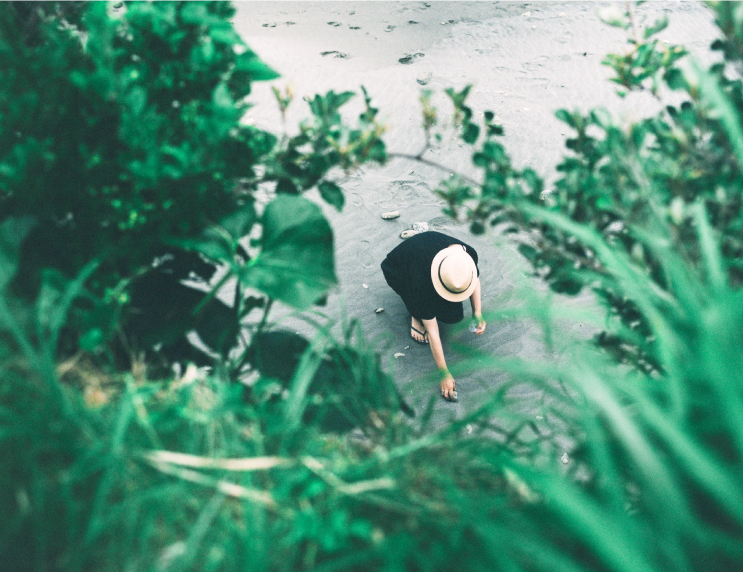
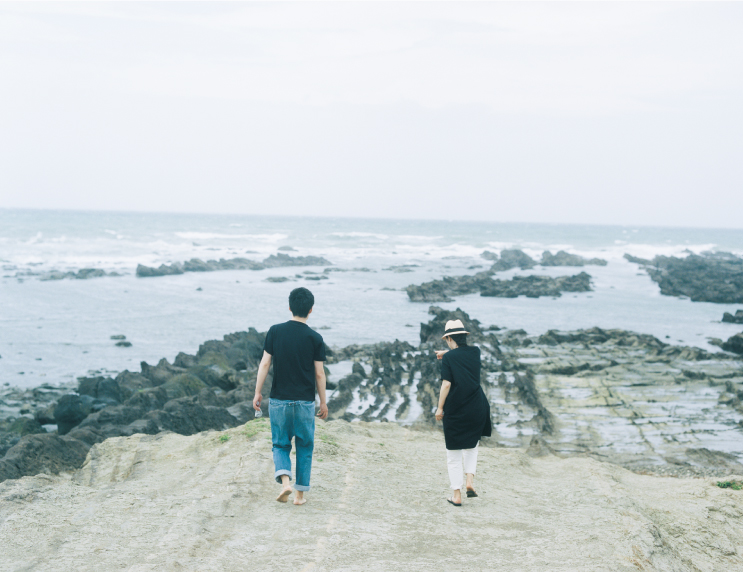
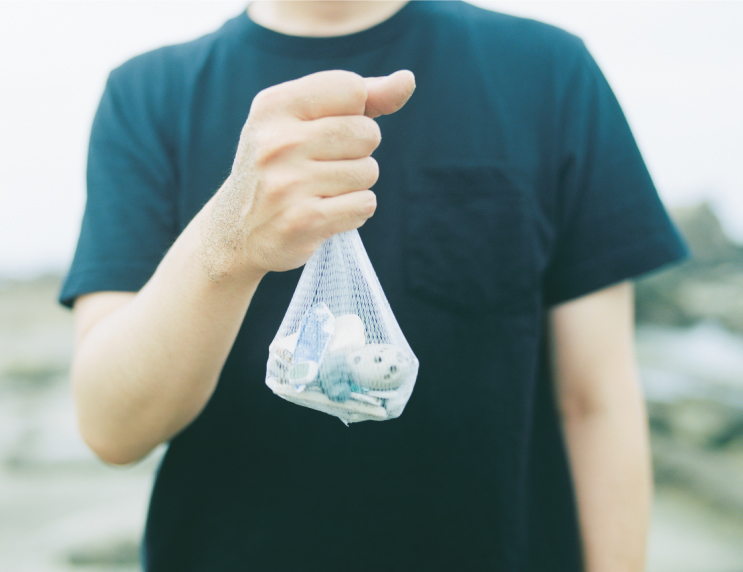
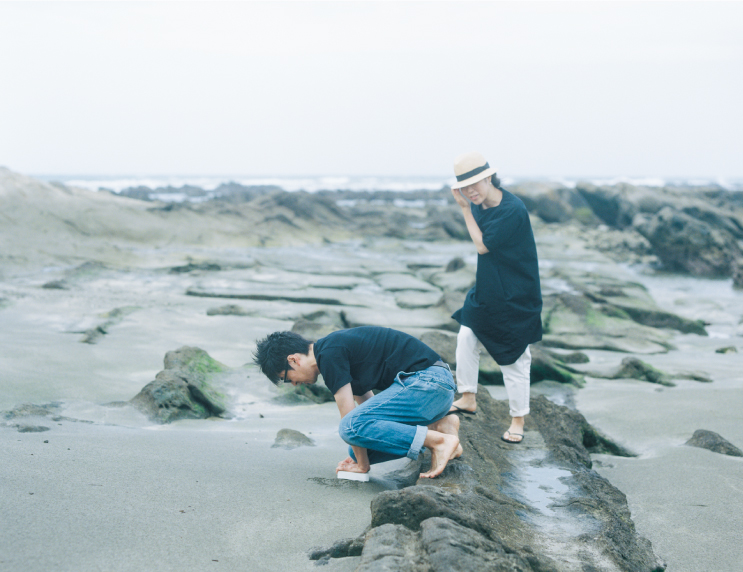
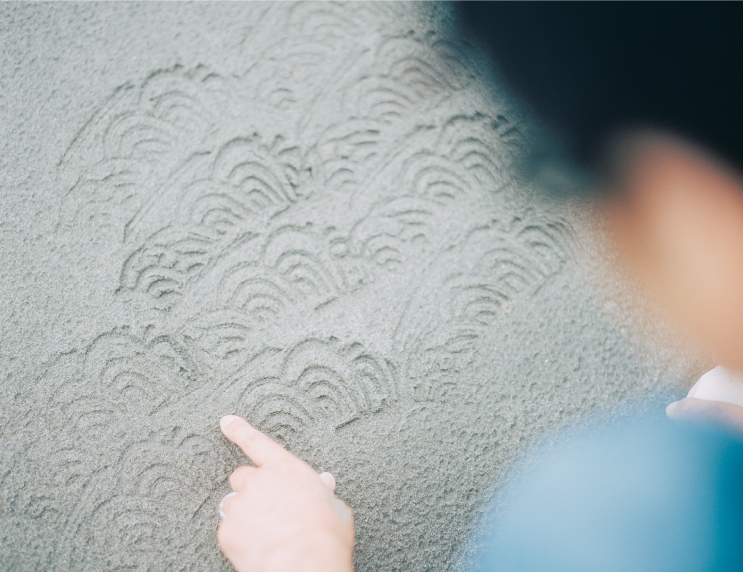
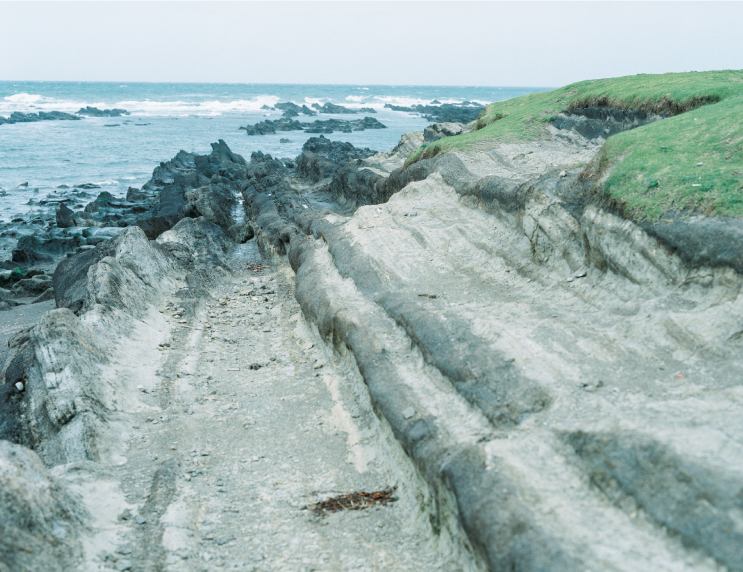
過去から未来へと繋がる
“ウォッシュド・パターン”
かつては花瓶や食器、タイルであっただろう陶器の破片に残された模様を抽出し、新しい模様を生み出すguse arsのプロジェクト“Washed Pattern(ウォッシュド・パターン)”。そのコンセプトや手法はどのように生まれたのだろうか。「陶片そのものが、もともと割れる前は何だったのか。そこにどんな模様が描かれていたのか。不思議とそこに興味が向かなかったんですね。それよりも、残った要素で新しい概念を見いだすことに関心があった(岩瀬)」。「パターンというアイデアは早い段階で頭に浮かびました。ひとつの点でも繰り返せばパターンになる。陶片に残ったほんの小さな要素さえあればパターンは生み出せるんです。それでオリジナルなものが作れないかと思いを巡らせました(村橋)」。
ふたりは手元にあったコピー用紙500枚に、溢れ出る創作意欲をぶつけた。まるで千本ノックのようだったと懐かしそうに振り返るふたりは、拾ってきた陶片の模様をもとに、パターンを何通りも何通りも生み出し、プリントした。「想像を超えて良いものができたんです。パターンにすることで、もとのイメージがガラリと印象を変えるのが面白い(岩瀬)」。「もともとの意味が、割れて小さくなり、僕らの手によって、また別の意味を持つ。具象的なものが抽象的なものになる。さらにそこから具象的なものを作ることもできる。やりたいことは無限にあって、僕らは8年これをやっているけど、まだ何もやれてないんです(村橋)」。
遥かな海を漂い漂着した小さな陶片。長い時を経てなお表面に残る模様の痕跡は、まるで意思を持ったDNAのようにも思える。陸に漂着し、guse arsとの遭遇によって進化を遂げ、またいつか破片となって海に還るのだ。「陶器の欠片から生まれたwashed patternを器やタイルとして生活に戻すことで、遠い未来、再び割れて欠片となり、何処かに流れ着く日が来るかもしれません。これは永遠に続けることができるサイクルです。生命が子孫を残していくように、陶片もまた未来に続く模様の子孫を繋いでいくことができます(村橋)」。
“Washed Pattern” is a project of “guse ars” that creates new patterns by using those of pottery fragments which were probably once a vase, tableware or a tile. How did the concept and the technique come up? “Strangely enough, our interest was not in what the original shape of the fragments was or what kind of design was painted. Rather, we were more interested in finding a new concept with a few elements left (Iwase).” “We got the idea at an early stage. Even a dot can be a pattern if repeated. So you can create new patterns with a tiny element left on a pottery fragment. We wondered if we could create something original (Murahashi).”
Then, they took out 500 pieces of copy paper and wrote down their endless appetite for creation. In that process, which they wistfully recall as something like hard baseball training, they created hundreds of patterns based on the pottery fragments they had gathered and printed them out. “It was beyond our expectation. What is interesting is that an impression of the original image changes drastically by being transformed into a pattern (Iwase).” “An original meaning gets broken into pieces and transformed to something different by our hands, from concrete to abstract. Then, we can also make it something concrete. There are countless things we want to do. Though we have been doing this for 8 years, we haven't done much yet (Murahashi).”
Tiny pottery fragments have floated the ocean and been washed ashore. After a long period of time, the traces of the original design still remains, which seem something like DNA with their own intention. After being washed ashore, those fragments are transformed by the encounter with “guse ars”, and someday, they would go back to the ocean as broken pieces again. “If we bring “Washed Pattern”, created from broken pottery fragments, back to our daily lives as tableware or tiles, they might get broken and be washed ashore to somewhere again in the future. It may be a cycle that continues forever. Just like we leave offspring, pottery fragments also can leave endless patterns to the next generation (Murahashi).”
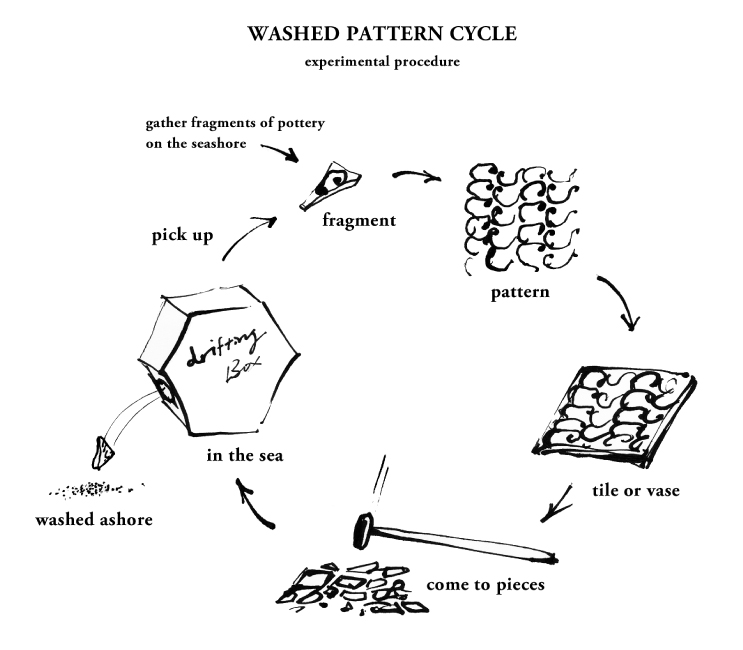
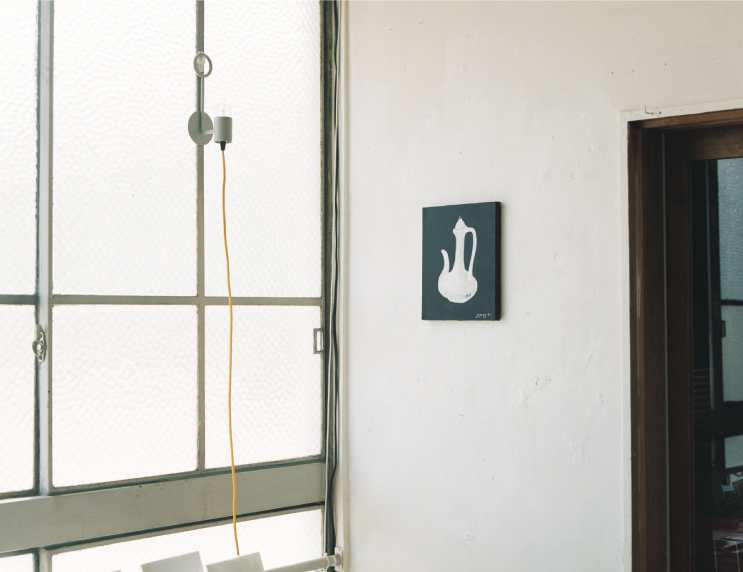

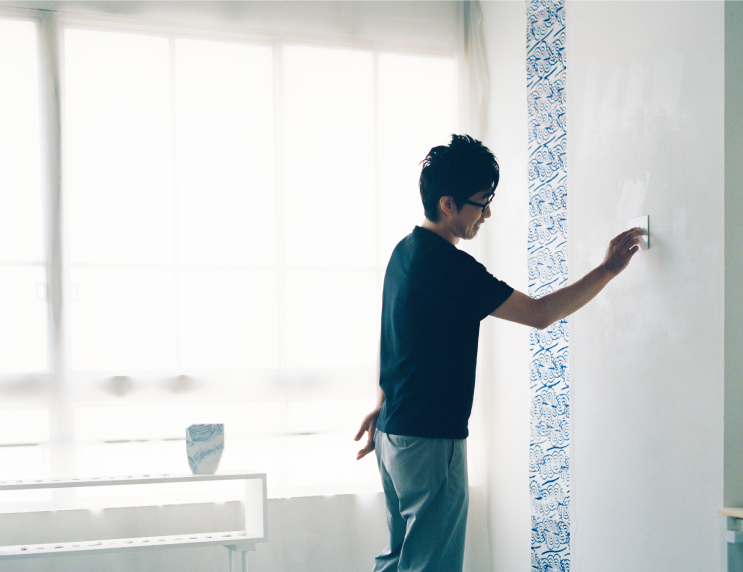
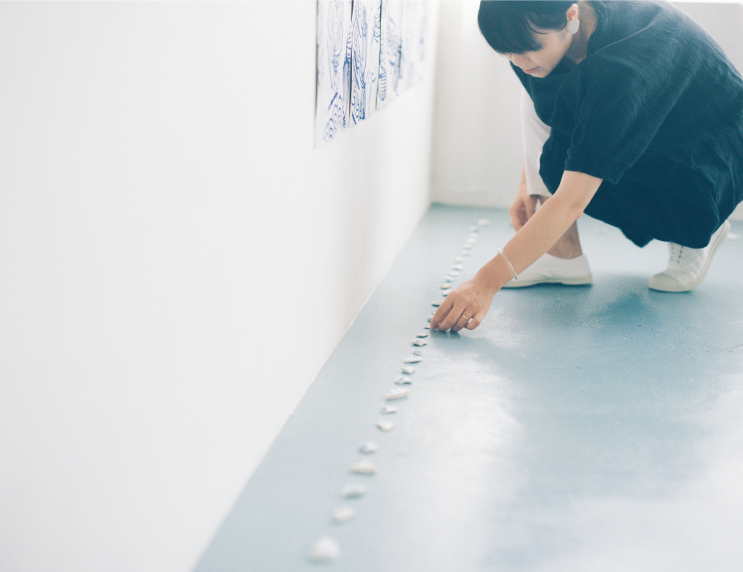
もし、陶片が割れなければ?
並行世界に想いを馳せて
名古屋市東山公園にあるギャラリーを併設する人気ブックストア『ON READING』で、2018年8月guse ars、そして村橋貴博さん、岩瀬敬美さんのソロ活動による展覧会『Parallel broken/unbroken』が開催された。葉山の海岸での出会いから1カ月後、私たちは再びふたりに会うため会場を訪ねた。
結成8年目、今回で14回目を数える展覧会は、ふたつの陶片をもとに、“もし、異なる割れ方をしていたなら”という、並行世界(パラレルワールド)を独自の解釈と表現で可視化するという、極めて実験的な空間演出がなされていた。
「陶片からパターンを生み出す行為は、いくつもの偶然性の上に成り立っています。もしかしたら違う割れ方をしたのではないか、違う場所に漂着したのではないか、というように運命がいくつも枝分かれする瞬間があるんです(村橋)」。もし違う割れ方をしていたらー。陶片に向き合うふたりの深い考察から導き出されるテーマは、彼らの創造的探究心をそのまま表している。
模様を再構成し、新たなパターンを創出するという基本的なコンセプトをベースに、“時間”や“場所”、そして“並行世界”へと想像の羽を伸ばすguse ars。小さな陶片との偶然の出会いは、永遠に広がる創造と思考の海へと、彼らを誘い続ける。無限の可能性を秘めた陶片が浜辺に漂着し続けるかぎり、ふたりの創作もまた広がり深まっていくのだろう。
In August 2018, an exhibition by “guse ars”, Takahiro Murahashi and Satomi Iwase, “Parallel broken/unbroken” was held at a popular bookstore and gallery “ON READING” in Higashiyama Park, Nagoya. One month after we met on the beach in Hayama, we visited the exhibition to see them. The space production of their 14th exhibition, in 8 years, was totally experimental. They visualized the parallel world with their unique interpretation and expression; what if two pieces of fragments got broken in different ways? “The process of creating patterns from pottery fragments is based on various coincidences. It could have got broken in a different way, or been washed ashore to somewhere different. There must have been various turning points that had made those differences (Murahashi).” If only it got broken in a different way. – The theme, led by their deep consideration of pottery fragments, must be their creative inquiring mind. Based on a concept to reconstruct a pattern and create something new, the imagination of “guse ars” even extends to time, space and the parallel world. Accidental meetings with tiny pottery fragments keep on inviting them to the ultimate ocean of creativity and imagination. As long as pottery fragments are washed ashore to a beach with ultimate possibilities, their creativity will keep on exploring and getting even deeper.
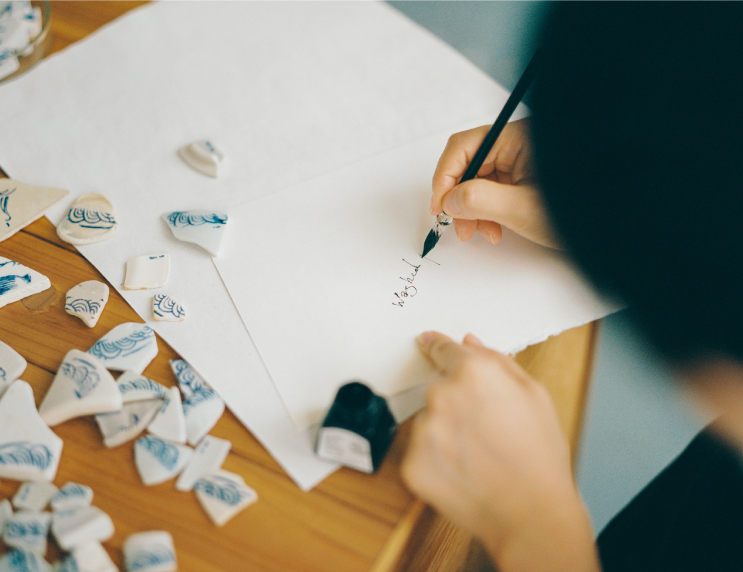
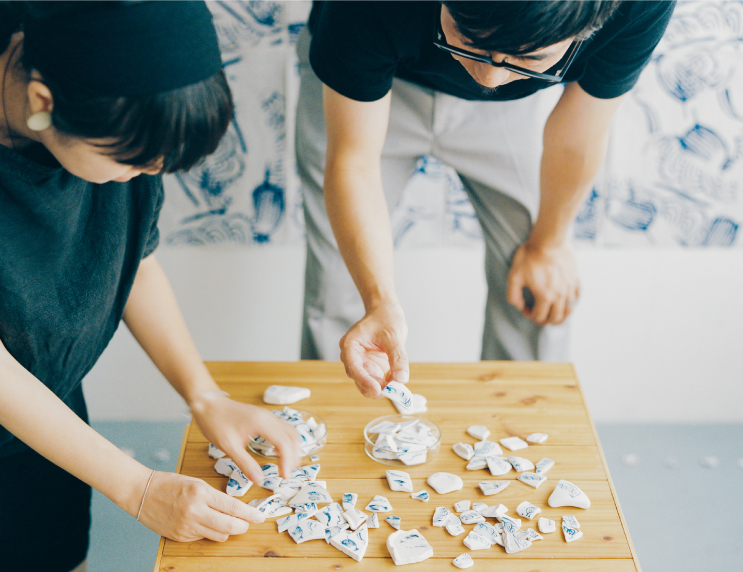


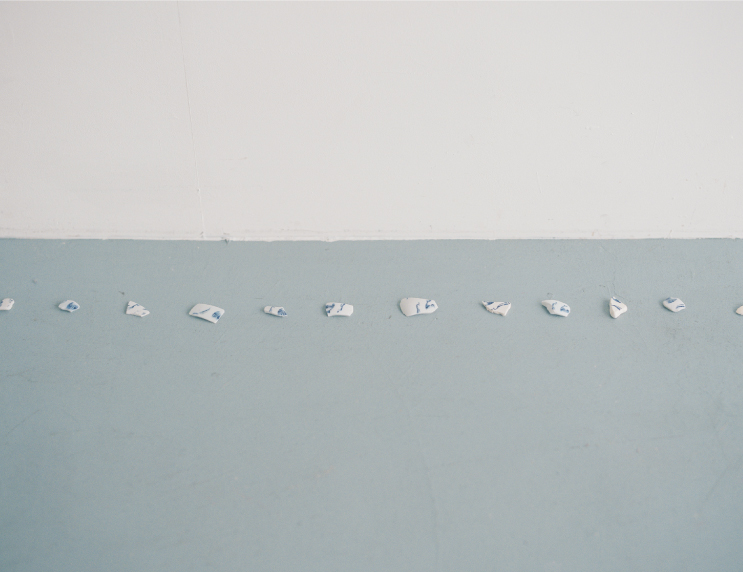
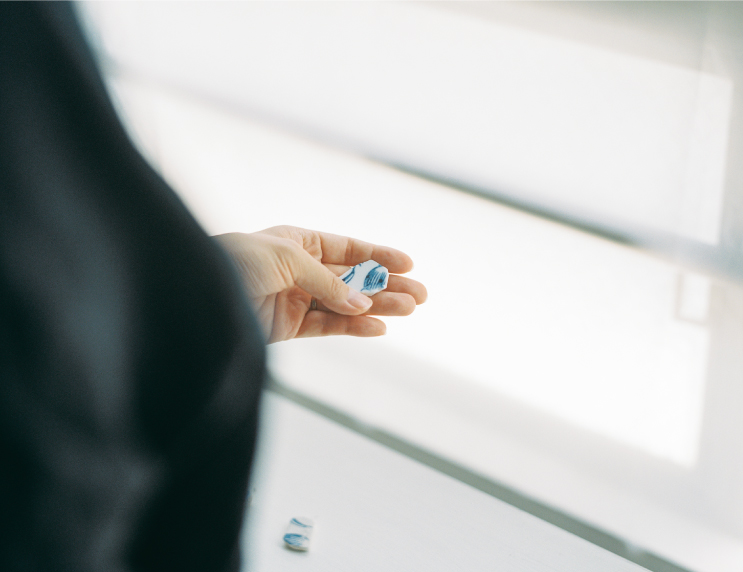
今回の並行世界についての展示を拝見しながら、陶片を使った表現の持つ深み、広がりを改めて実感した。
ふたりが最初の陶片を見つけたという偶然、その事象そのものが、彼らの作品における表現を言い表している。
浜辺に落ちていた、小さな陶器の破片を、もし彼らが拾わなければ?
その小さな陶片から、無限に広がっていく作品の数々は、やはり生まれなかったのだろうか。
幾通りにも折り重なった過去・現在・未来に想いを巡らせるguse arsによって、“選ばれた”パターンたち。
無限に繰り返す模様の広がりに身を任せ、遠くの波音に耳を傾けてみるのはどうだろう。
At the exhibition on the parallel world, I realized again how deep and wide the expression by pottery fragments can be.
The accidental meeting with the first pottery fragment itself must represent what they express in their works.
What if they did not pick up the tiny piece of pottery fragment on the beach?
Wouldn't their numerous works, which were born from the tiny pieces, been created?
The patterns are selected by “guse ars”, imagining multilayered past, present, and future.
It wouldn't be a bad idea to throw you to the expanse of the ultimate patterns and listen to the sound of waves.
guse ars × mature ha.
「washed pattern “Leaf Crown” series」
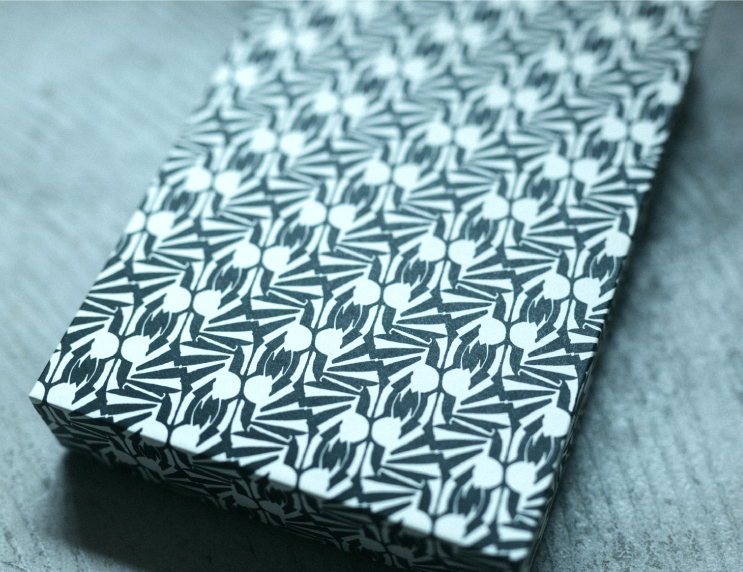
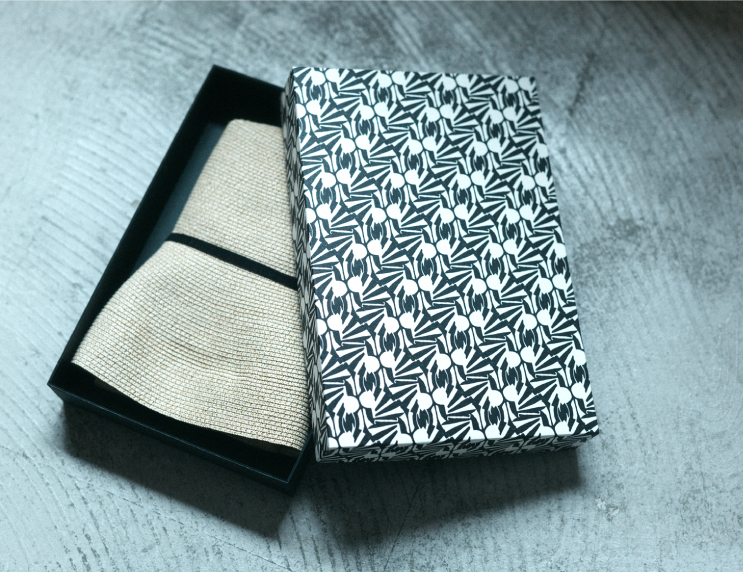
guse arsがパターンを製作したmature ha.のPAPER HATが収まるスペシャルボックス。“冠る”という行為に着目し、古代ギリシャの祭りの勝者に与えられた冠からイメージを膨らませ4種類のパターンを生み出した。Olive(オリーブ冠)、Pine(松冠)、Bay laurel(月桂冠)、Parsley(パセリ冠)と、オリュンピア大祭をはじめとする古に伝わる4つの祭り、その象徴である冠にあしらわれた植物がモチーフとなっている。「washed pattern “Leaf Crown” series」と名付けらたパターンのうち、今回のボックスには“Olive”が採用された。
This special box for PAPER HAT by mature ha. has a pattern created by guse ars. Focusing on the act of putting on, guse ars created four kinds of patterns; Olive, Pine, Bay laurel, and Parsley, from an image of the crowns that were given to the winners at the festivals in ancient Greece. The motif is a plant that was designed in the crowns, the symbols of the four festivals such as Ancient Olympic Games. Those patterns were named “washed pattern “Leaf Crown” series” and “Olive” was adopted, out of the four patterns, for the box this time.

PROFILE
2010年結成。東京を拠点に活動する村橋貴博と岩瀬敬美による2人組のアートプロジェクト。海や川に漂着する陶片を採集し、それを創造の種として作品発表、アートワークの提供、デザイン制作などを行っている。また、村橋貴博はコラージュワーク、岩瀬敬美はドローイングワークなどソロ名義での活動も並行している。
“guse ars” is a Tokyo based art unit by Takahiro Murahashi and Satomi Iwase that started in 2010. As a source of their creation, they gather pottery fragments that have been washed ashore on a beach or a river bank to produce a variety of artworks and design. They also perform as solo artists; Takahiro Murahashi as a collage artist and Satomi Iwase as a drawing artist.
